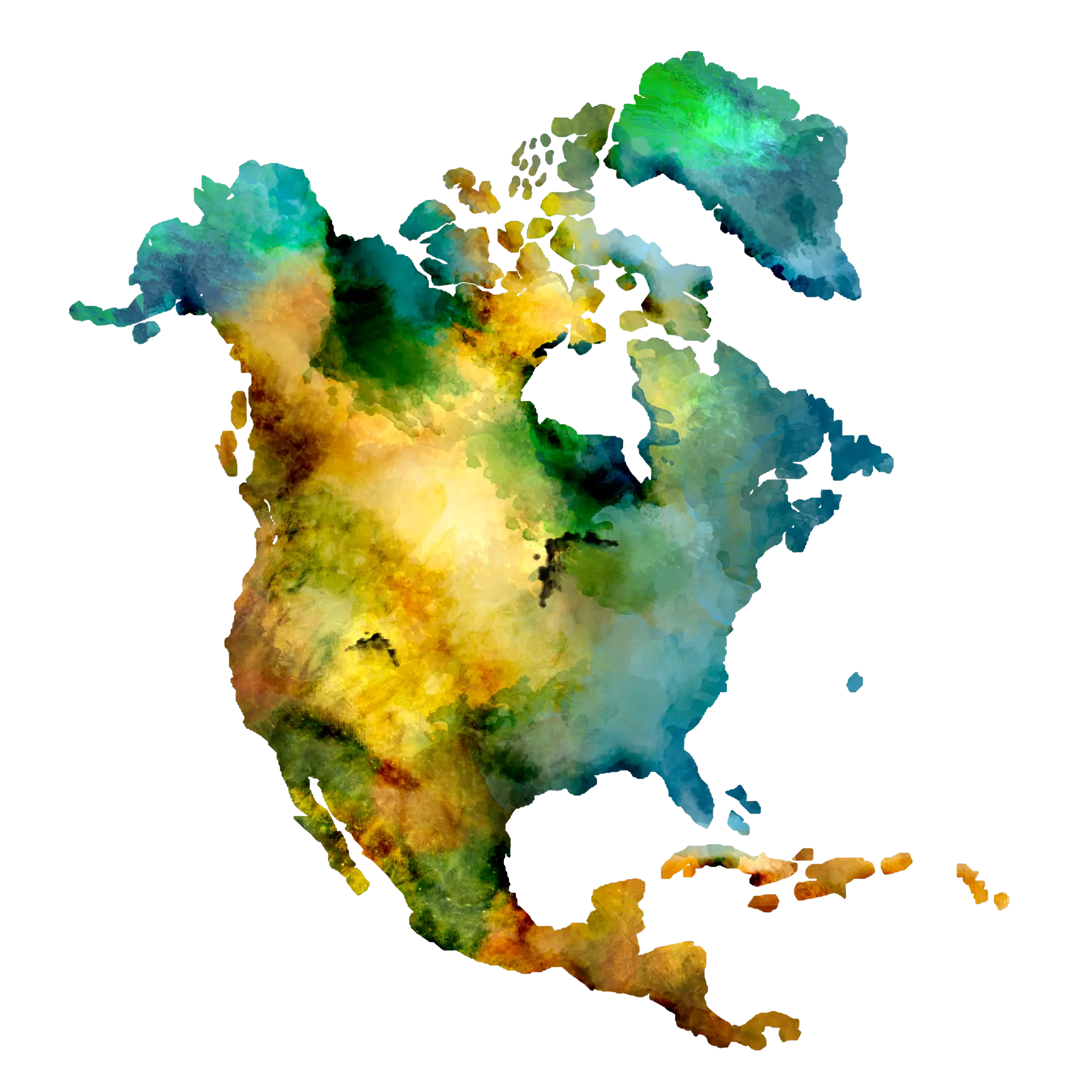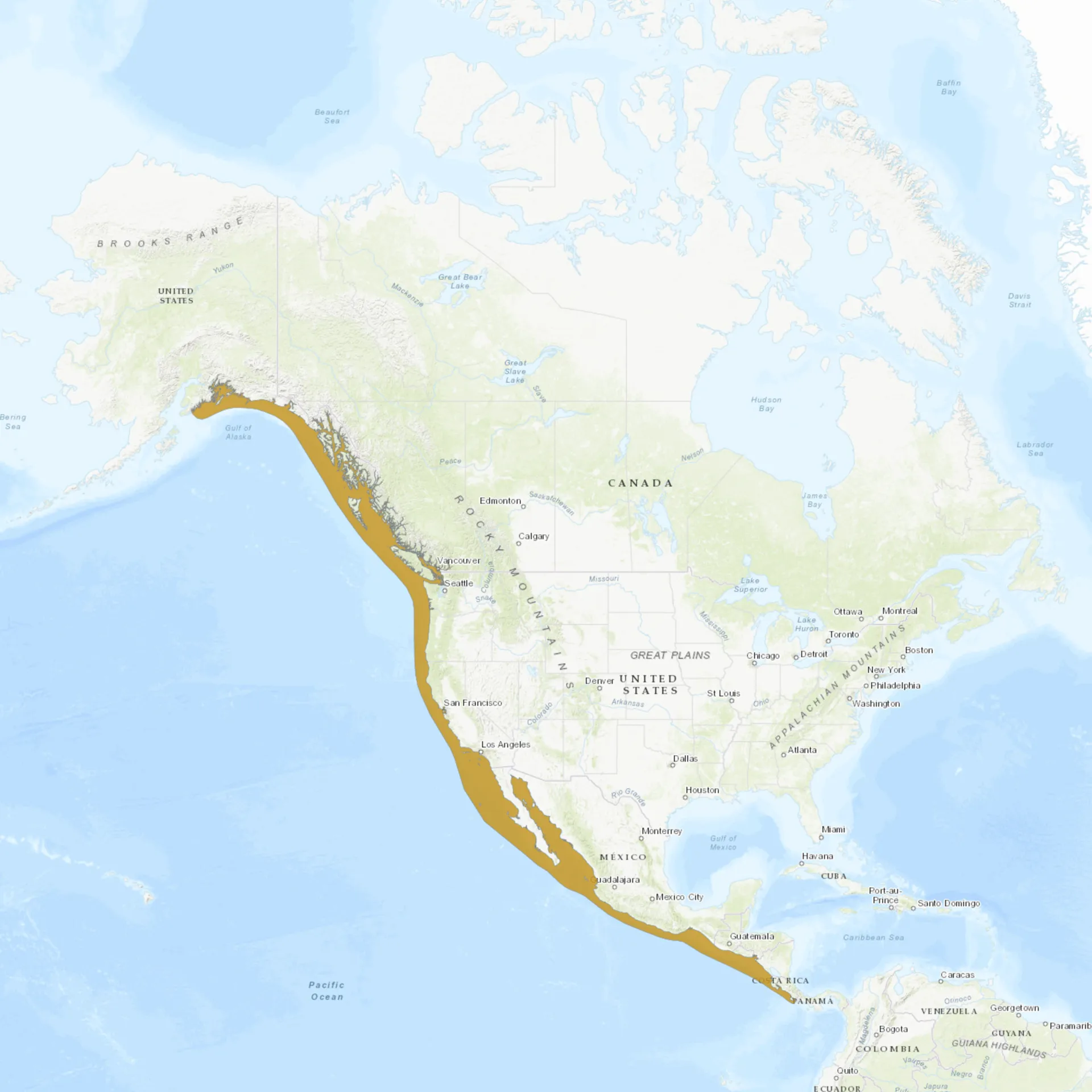Overview
The California sea lion is a marine mammal indigenous to the western coastlines of North America, ranging from the Gulf of Alaska down to Baja California in Mexico. They are frequently sighted on rocky and sandy shores, jetties, and even in marinas, making them familiar in their native range. Belonging to the family Otariidae, they are pinnipeds, sharing this classification with other sea lions and seals.
These animals exhibit high levels of sociality and intelligence, often forming groups known as rafts or colonies on land or in the water. Social behaviors include a range of vocalizations and physical interactions, which serve various purposes, such as establishing dominance or nurturing the young. Studies have shown that they are capable of complex problem-solving and can be easily trained to perform tasks. These characteristics have led to their involvement in research and even military applications.
Known for their playful and curious nature, California sea lions are agile swimmers, often seen porpoising and leaping out of the water. This agility is primarily attributed to their streamlined bodies and strong, wing-like front flippers, providing excellent swimming maneuverability. They can reach speeds up to 25 mph and are adept at long-distance swimming and deep diving, thanks in part to their well-adapted circulatory system that allows them to conserve oxygen during dives.
Current distribution:
The California sea lion boasts a widespread population that extends from southeast Alaska down to the Gulf of California in Mexico, covering a significant portion of the western coast of North America. Their adaptability to diverse marine environments contributes to this extensive range. They are commonly seen in natural settings like rocky coastlines, sandy beaches, estuaries, and in and around harbors, bays, and tidal inlets. This adaptability allows them to inhabit areas with easy access to food sources and safe haul-out sites for rest and social interaction.
In addition to their natural habitats, California sea lions are also known to frequent human-made structures such as piers, jetties, and marinas. Their presence in these areas often makes them a familiar sight to people living in coastal communities. While some view them as a nuisance due to competition for space and resources, others see their adaptability to human-altered environments as a testament to their intelligence and resilience. Regardless, their capability to thrive in natural and human-modified landscapes is a significant factor in their widespread distribution.
Physical Description:
California sea lions exhibit sexual dimorphism, with males, also known as bulls, being significantly larger than females. Adult males can weigh up to 1,000 pounds and are distinguishable by a thick fur mane around their necks. Both males and females have a robust, streamlined body covered in a layer of short fur that varies in color from shades of brown to blonde. The fur is specially adapted to provide buoyancy and insulation, vital for life in often cold Pacific waters.
One of the distinguishing features of California sea lions compared to true seals is their externally visible ear flaps. These external ears are a characteristic feature of animals in the family Otariidae. Additionally, they have large, well-adapted eyes that enable them to see clearly in low-light conditions, which is particularly useful for hunting in deeper, darker waters. Their limbs are transformed into strong, flipper-like appendages that grant them remarkable agility and speed in the water, making them efficient predators and skilled swimmers.

Lifespan: Wild: ~15 Years || Captivity: ~30 Years

Weight: Male: 610-860 lbs (276-390 kg) || Female: 240-420 lbs (109-191 kg)

Length: Male: 84-95 in (213-241 cm) || Female: 60-77 in (152-196 cm)

Height: Male: 30-39 in (76-99 cm) || Female: 27-35 in (68-89 cm)

Top Speed: 25 mph (40 km/h)
Characteristic:
Native Habitat:
The California sea lion’s natural habitat is predominantly along North America’s western coastline, stretching from the Gulf of Alaska down to Baja California in Mexico. This extensive range includes a variety of marine environments, from open ocean waters to more sheltered coastal and estuarine areas. Within these zones, they are commonly found in bays, harbors, and tidal inlets. These locations often provide them with easy access to their primary food sources, such as schools of fish and cephalopods, and protection from predators like great white sharks and orcas.
One key characteristic of their chosen habitats is the availability of haul-out sites, where they can leave the water to rest, socialize, and sunbathe. These sites may be rocky or sandy beaches, jetties, or even man-made structures like docks and buoys. Haul-out sites are essential for various aspects of their life, including molting social interaction, and as places for females to nurse their young. The preference for habitats with easy access to both open water for feeding and haul-out sites for resting effectively shapes the distribution of California sea lions along the North American coastline.
Climate Zones:
WWF Biomes:
Biogeographical Realms:
Continents:
Countries:
Diet:
Diet & Feeding Habits:
The primary diet of the California sea lion consists of fish and cephalopods. These opportunistic feeders have a broad palate, commonly consuming species such as sardines, anchovies, hake, Pacific mackerel, and squid. They employ strategic foraging techniques, often herding schools of fish into dense clusters known as bait balls. By doing this, they make it easier for themselves and other sea lions to feed efficiently, maximizing their energy intake while minimizing the effort expended during hunting.
Diving plays a significant role in their foraging behavior, with these animals capable of reaching depths of up to 900 feet. However, most of their hunting occurs in shallower waters where prey is abundant. They have specialized adaptations for deep diving, such as a well-developed circulatory system that enables them to store more oxygen in their muscles, allowing for longer periods underwater. Their diving abilities also provide them access to diverse habitats, from coastal shallows to deeper oceanic waters, where different prey species can be found.
Mating Behavior:
Mating Description:
California sea lions display a noticeable degree of sexual dimorphism, with adult males significantly larger than their female counterparts. Males, also known as bulls, can weigh up to 1,000 pounds, and they use their size and strength to establish territories in breeding rookeries. During the breeding season, these males engage in vocal and physical displays, such as barking and posturing, to attract females and deter rival males. Territorial males are often surrounded by a harem of females with whom they mate during the season.
The breeding season also brings attention to the female California sea lions, who typically give birth to a single pup between May and July. After giving birth, the females nurse their young and, shortly after that, mate again to conceive for the following season. The gestation period for a California sea lion lasts about 11 months, including delayed implantation. This biological feature allows the female to pause the development of the fertilized egg, ensuring that she gives birth at a time that is most advantageous for the survival of her pup.
Reproduction Season:
Birth Type:
Pregnancy Duration:
Female Name:
Male Name:
Baby Name:
Social Structure Description:
California sea lions are gregarious animals known for their social tendencies, often forming groups called rafts when in the water and colonies when on land. The size and composition of these groups can vary widely depending on factors such as location, time of year, and specific activities like breeding or foraging. Social interactions are rich and involve a range of behaviors, including vocalizations like barks and growls, which serve as communication tools. Physical contact, such as nuzzling or body-slapping, is also common and serves various social functions, including reinforcing social bonds.
Regarding spatial distribution, sea lions show sexual segregation, particularly outside the breeding season. Males, also known as bulls, may form bachelor groups and occupy separate areas from the females and juveniles. Cooperative behaviors are often observed, especially in hunting scenarios where sea lions work together to herd fish schools, making capturing their prey easier. Such cooperative strategies increase foraging efficiency and reinforce social cohesion within the group.
Groups:
Conservation Status:
Population Trend:
The overall population of California sea lions is increasing, with current estimates placing the number of individuals in the wild at around 180,000. The increasing population is partly attributed to legislative measures such as the Marine Mammal Protection Act of 1972, which has played a crucial role in safeguarding these animals from harm and reducing human-caused mortality. The act prohibits the hunting, capture, and harassment of marine mammals, and its implementation has led to a noticeable uptick in the population numbers of the California sea lion over the years.
Despite this general population trend, certain areas have observed regional fluctuations. These fluctuations are often attributed to factors such as changes in environmental conditions, ocean temperatures, and prey availability. For example, El Niño events, which are warm ocean waters, can lead to shifts in prey distribution, affecting the foraging success of these sea lions. Similarly, other environmental stressors like pollution or habitat degradation may also impact regional populations. The causes of these fluctuations are complex and often involve natural and anthropogenic factors.
Population Threats:
Despite enjoying a relatively stable population status, California sea lions are not without threats that threaten their well-being. Pollution, specifically chemical runoff and oil spills, greatly threatens their health and habitats. Habitat degradation, often due to human development or climate change, further complicates their survival. Moreover, they often face direct human interference in the form of boat strikes or harassment when they haul out into public or private areas. These challenges are exacerbated by the entanglement risks associated with fishing gear and marine debris, which can lead to injuries or death.
Health issues are another significant threat to California sea lions, notably diseases like leptospirosis and conditions caused by algal blooms, such as domoic acid poisoning. Leptospirosis is a bacterial infection affecting the kidneys and can be fatal if not treated. Domoic acid poisoning occurs when sea lions consume fish-ingested toxic algae, leading to neurological symptoms. Both diseases can have severe consequences for sea lions and potentially impact the health and stability of the larger population. Monitoring and research are ongoing to understand these threats’ full extent and develop mitigation strategies.
Conservation Efforts:
Conservation efforts for the California sea lion are spearheaded by various legislation, most notably the Marine Mammal Protection Act and the Endangered Species Act in the United States. These laws have established a legal framework to safeguard sea lions and other marine mammals against activities like hunting, harassment, and other forms of harm. Regulations stipulate specific boundaries and guidelines for human activities near habitats crucial for sea lions’ survival, including breeding rookeries and feeding areas. These laws have contributed substantially to the overall stable status of the species’ population.
Aside from legislative measures, rescue and rehabilitation centers play a crucial role in conserving California sea lions. These facilities provide medical care to sick or injured animals, often nursing them back to health before releasing them into the wild. Public awareness campaigns are another pillar of conservation efforts. These campaigns aim to educate the public on the importance of these marine mammals to the ecosystem and how to coexist with them responsibly. Information on reducing boat speeds in sea lion habitats, avoiding close encounters, and reporting stranded or injured animals are disseminated to encourage responsible behavior around these creatures.
Additional Resources:
Fun Facts
- California sea lions can sleep in water by floating on the surface.
- They are one of the most trainable marine animals often seen in zoos and aquarium shows.
- Females can recognize their pups among thousands through vocalizations and scent.
- Unlike seals, they can walk on all four flippers.
- They have been known to “surf” on breaking waves for fun.
- These animals have a high metabolic rate, allowing them to stay warm in cold waters.
- California sea lions have been observed engaging in cooperative hunting with dolphins.
- They can dive for up to 10 minutes but usually prefer shorter dives of 1 to 3 minutes.
- During the breeding season, a dominant male may have a harem of up to 15 females.
- They have excellent eyesight and can see well in low-light conditions, aiding them in deep-water hunting.










